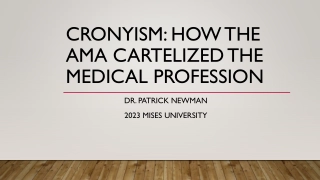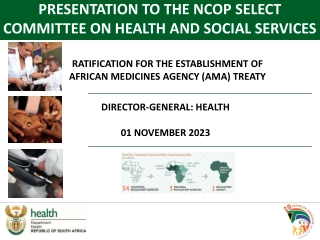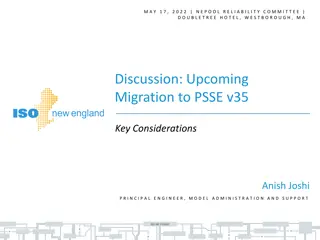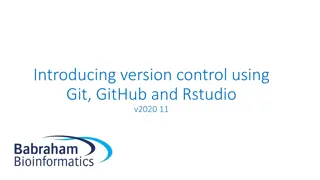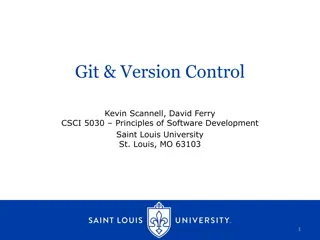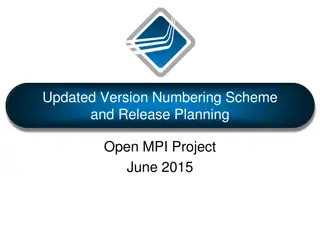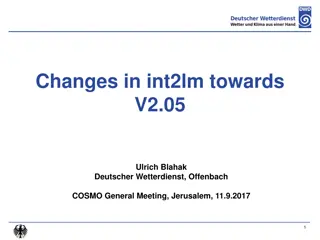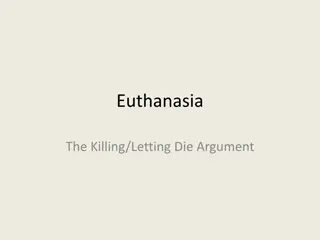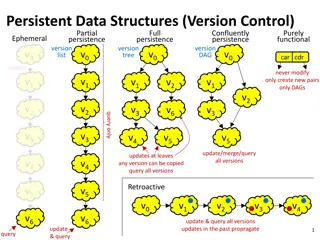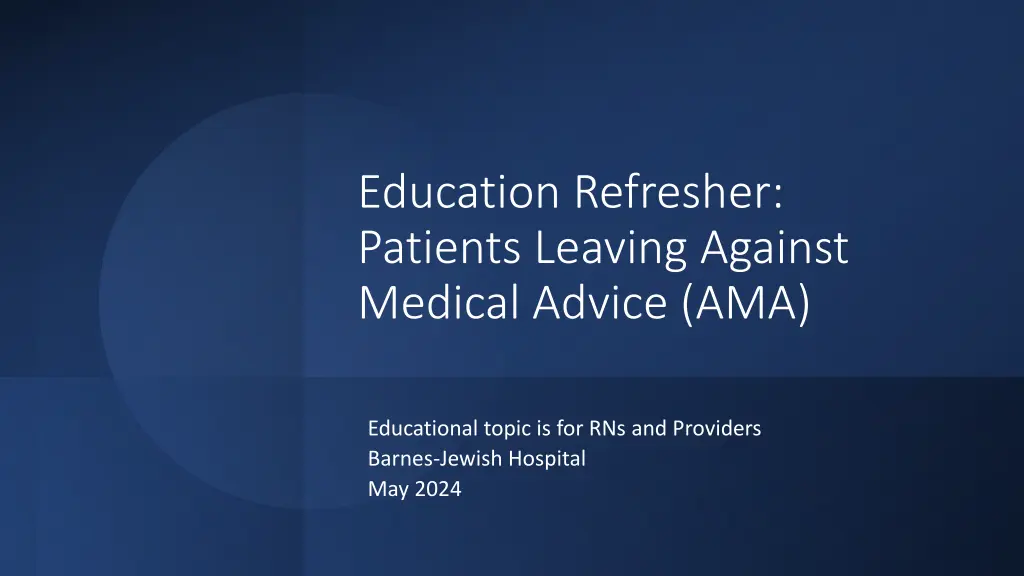
Managing Patients Leaving Against Medical Advice (AMA) - Key Strategies and Considerations
Learn about the importance of early communication, understanding patient perspectives, and the appropriate steps to take when a patient expresses the desire to leave against medical advice (AMA). Explore the process of assessing capacity, engaging with patients, and addressing concerns effectively to ensure patient safety and well-being.
Download Presentation

Please find below an Image/Link to download the presentation.
The content on the website is provided AS IS for your information and personal use only. It may not be sold, licensed, or shared on other websites without obtaining consent from the author. If you encounter any issues during the download, it is possible that the publisher has removed the file from their server.
You are allowed to download the files provided on this website for personal or commercial use, subject to the condition that they are used lawfully. All files are the property of their respective owners.
The content on the website is provided AS IS for your information and personal use only. It may not be sold, licensed, or shared on other websites without obtaining consent from the author.
E N D
Presentation Transcript
Education Refresher: Patients Leaving Against Medical Advice (AMA) Educational topic is for RNs and Providers Barnes-Jewish Hospital May 2024
Defining AMA, Capacity & Competency BJH as an organization respects the rights of patients, who have decisional capacity, to control their own medical care. Leaving Against Medical Advice is a decision by the patient to self-discharge from a healthcare facility and/or refusal of medically recommended treatments, after having been informed of the risks and having the ability to appreciate the risk of leaving without completing treatment. Patients are legally able to discharge themselves without completing treatment if determined to have capacity. If a patient has decisional capacity, in general, they may choose to refuse and/or discontinue treatment whenever they desire. Capacity refers to an assessment of an individual s psychological ability to form rational decisions, specifically their ability to understand, appreciate and manipulate information to form rational decisions. Capacity can be dynamic and fluctuate day to day in situations when the cause is reversible, effecting decisional capacity Competency is a legal term, and only determined by a court; refers to the mental ability and cognitive capabilities required to rationally execute a legally recognized act such as enter a contract, prepare a will, stand trial or make medical decisions.
Hear the Patient & Identify the Signals Early communication is key! Patients will often signal that they are thinking about leaving AMA before they leave. Be observant of both verbal and nonverbal behaviors from the patient. Understanding from the patient s perspective with early & effective communication is key to prevention. From the patient s perspective, understand their rational for expressing interest in leaving (such as pain control, financial concerns, fear of hospitals, dissatisfaction with medical treatment, wait times, food, personal issues) for opportunities to proactively address/resolve. The provider may offer medication adjustments when appropriate, offer alternative treatments or diagnosis options when available and discuss the concerns with patient and/or family. Ask what they need to feel supported during their hospital stay, provide social resources to patients, escalate to leaders in attempt to resolve concerns with dissatisfaction of care.
When a patient wants to leave AMA Immediately inform the provider team and nursing leadership (or nursing supervisor) of patient s plans to leave. Reasonable attempts should be made to persuade the patient to stay for treatment. An Informed discussion about AMA with the patient is a process, not a signature on the AMA form. This process must include both evaluation and documentation of capacity in addition to outlining the risks of leaving before medical treatment is complete, benefits of staying, and alternatives to treatment or leaving AMA should be treated as a discharge process. If the patient is agreeable to waiting, they should receive discharge instructions, prescriptions that will benefit the patient, home health services such as DME and follow up instructions. After an informed discussion occurs, the patient should sign the Against Medical Advice Release/Refusal to Treat form. If the patient does not have transportation home, social work should be engaged for evaluation of transportation options. Patients with Legal Guardians may not leave AMA. Reasonable attempts should be made to persuade the patient to stay at the hospital for treatment while contacting the legal guardian. Contact house supervisor and risk management for assistance.
Completing the AMA form The patient s signature must be obtained on the form by the provider and witnessed by a staff member. If the patient refuses to sign the Against Medical Advice Release/Refusal to Treat form or would not wait for a provider: Write across the top of the form Patient refuses to sign Document in the medical record that the patient refused to sign, with reasons, if known The provider must check all 4 boxes at the bottom of the form and sign, even if the patient refuses to sign. Documentation of signature (or patient s refusal) must be included in the EMR.
RNs Role Immediately escalate to nursing leadership and the provider for intervention Some situations may need to be evaluated on a case-by-case basis; call Risk Management when discussions are needed to understand if patient may leave AMA Document a nursing note that includes If patient signed or refused to sign the form If patient left prior to signing or speaking to a provider Time and name of provider who interacted with the patient, if applicable Any attempts to resolve the patient s dissatisfaction prior to leaving. Discharge AMA from EMR Complete a SEMS report
Providers Role If a patient chooses to leave AMA, the provider must ensure they have decisional capacity and in a state of mind that allows them to make clear decisions. The emphasis is on the process, not the form. The provider should educate on the reasons a patient should stay and seek to understand the patient s reasons for wanting to leave. If a patient is leaving AMA, it is best practice for the patient and provider to sign the AMA form. If the patient refuses to sign, the patient's refusal should be documented both in the medical record and on the form and signed by the provider and witness. Documentation should mimic the AMA form include: 1) patient s reason for leaving, 2) assessment of capacity to make decisions, 3) explanation of risks/benefits, alternatives to leaving AMA, 4) AMA form completion (or refusal to sign), and 5) appropriate follow up, prescriptions and discharge instructions provided.
Early communication with the patient is a top priority! The AMA Policy outlines the patient s right to autonomy and self-determination with our responsibility at BJH to do what is in the best interest of the patient. Leaving AMA should be treated as a discharge process including discharge instructions, medications and follow up instructions. Discussion of leaving AMA is not just a signature. Documentation in the EMR must include prevention efforts, all discussions with the patient, reason for leaving, assessment of capacity, risks/benefits, alternatives and the patient s verbalization of understanding. Key Points
Risk Management On-Call 24/7- contact for questions/concerns via one of the following methods Smart web or Spok mobile oSearch for Risk Management BJH Hospital operator Call 314-273-RISK(7475) oOption 1 is for risk manager on call , then option 1 for WU risk or Option 2 for BJH risk. Additional Information
QR code to attestation link

